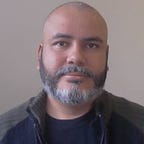Offline Interblockchain communication between EOS and Stellar.
“I discovered that you’d never get answers to simple questions from real gurus by asking. You have to be a troll in order for someone yo help you with your problems. For example, I didn’t know the difference between different consensus algorithms, and the whitepaper was too confusing. I knew from experience that if I just asked, I’ll be told to go back and read the whitepapers again.
Instead, I did what that works. Trolling! By stating that blockchain sucked because it was very difficult to understand the different consensus algorithms, I got every self-described blockchain gurus around the world coming to my aid. All this in order to prove to everyone which blockchain was better.”
I changed the original quote a bit to adapt to the context, but the basis is still as valid today as when it was written. It is so real that it is even known as Cunningham’s Law.
The 2nd EOS Community Conference took place in Rio de Janeiro, Brazil in mid-October, and thanks to EOS Nation I was able to attend and meet many of the celebrities of the EOS ecosystem. The event was a success and nobody wanted the week to end. Autumn from shEOS, suggested that we continue the party at the Blockchain Week in Las Vegas, which opened the topic with Robrigo of EOS Detroit about the importance of participating in non-exclusive EOS events.
A couple of weeks later, Stellar’s first conference, Meridian, was held in Mexico City. Thanks to the invitation of the Stellar Development Foundation, SDF, I was also able to attend that event. Unlike EOS, I did not know the Stellar community. Moreover, I did not even know it’s consensus algorithm. I had only 2 days to get the most out of the event and the best thing that occurred to me was to be a troll.
So, I dressed in my best EOS swag, cap, t-shirt, sweater, with the EOS logo everywhere, went to the Stellar event dressed like that. The event was a success! The event was divided into 2 levels, one focused on business, and the 2nd, oriented to the technical side. Luckily for me, the first talk in the technical room was the surgical dissection and meticulous analysis of Stellar’s consensus algorithm explained by a mathematician. I drool for knowledge, and every talk was better than the last. They were 2 full days of intense learning.
In the coffee breaks was when I got to meet many people who approached me with the icebreaker of “Are you from EOS?”. I don’t know how I didn’t go out in the news with a headline saying “An enraged crowd lynch Guatemalan at a gala dinner in the Center of Mexico City. It is speculated it was part of a sect by the strange pentacle in his shirt.” On the contrary, everyone was very friendly and more interested in living together than discussing differences between blockchains. I was very impressed by the different types of people who came to the event. From speculators to companies that develop the next generation of blockchain-based debit cards, a project I am in love with, I must confess, and I hope to write about soon. I was impressed by the quantity and diversity in the public, and that diversity translates into real blockchain use cases.
It is impossible not to compare the events, communities, and interests of the different blockchains, but it is important to focus on the things that everyone is doing well, and adopt them. It must be seen that both blockchains are looking for similar goals, but each making their own way. I also realize that one locks up a lot in a micro-ecosystem and not raising one’s head to see what others do, one does not realize that other people have already found solutions to problems that have held us for months.
I managed to have dinner with Jed McCaleb, creator of Stellar and current director of the SDF, and among the things we talked about was that EOS does not yet have a foundation, and after this event, I understood the advantages of having an organized structure dedicated 100% of it’s time to the growth of the blockchain in different aspects, such as marketing and social. I think if I have to take only one thing from everything I learned, and brought it to EOS it would be to create an EOS Foundation.
EOS does not have a foundation, and it was one of the topics proposed by Luke Stokes of eosDAC at the ECC. “I’m a little biased to propose the foundation to be a DAC,” Luke said, which makes perfect sense. DACs are, from my point of view, the “killer app” of blockchain, because there is no way to have a system like a DAC with traditional technology that depends on a centralized server. It is not the first time that an attempt has been made to create a foundation (such as the EOS Network Foundation, or the EOS Alliance) and I really hope that this proposal will permeate between ECC attendees and readers of this article, and not only support the idea, but look for it to be a reality.
So, I invite you all to be a little troll, to inspire other blockchains to attack you with their knowledge. I invite you to see what they are doing, and learn and adopt the best of them. It’s very likely you’ll be surprised.
